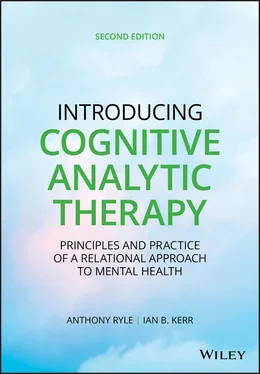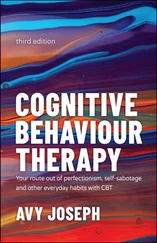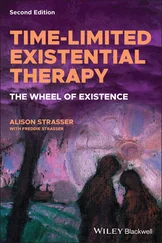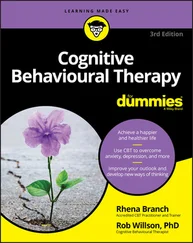1 ...8 9 10 12 13 14 ...27 Several decades ago, there was hardly any evidence to show whether psychodynamic therapy worked, and cognitive therapy was still at a very early stage. To measure the effectiveness of therapy it is necessary to declare at the start what the aims are. This is a task easily accomplished by behaviorists where aims are defined as the relief of symptoms or modification of behaviors, but more difficult for psychodynamic therapists whose aims are complex and are often poorly articulated, or only emerge in the course of the therapy. One early pre‐CAT study was undertaken to address this problem (Ryle, 1979). This involved a careful reading of the notes of a series of completed therapies with the aim of finding out how early in therapy the key problems had been identified. This revealed that most therapies were concerned with only one or two key themes and that these had usually been evident early on, often in the first session. It also showed that much of the work of therapy had been directed to trying to understand why the patient had not revised the ways of thinking and acting which maintained these problems. On this basis, the “dynamic” aims of therapy could be defined early on as the revision of the identified, repetitive, or maladaptive patterns of thought and behavior.
Three patterns explaining this non‐revision were identified; these were labeled dilemmas , traps , and snags . These patterns would now be understood as varieties of reciprocal role procedures (RRPs)—see below. Dilemmas prevent revision because the possibilities for action or relationships are seen to be limited to polarized choices; the only apparent options are to follow the less objectionable choice or to alternate between them. Traps represent the maintenance of negative beliefs by the way they generate forms of behavior which lead to consequences (usually the responses of others) that appear to confirm the beliefs. In snags, appropriate goals are abandoned or sabotaged, because (or as if) it is believed that their achievement would be dangerous to self or others or otherwise disallowed.
Further studies combined ratings of these patterns with the use of repertory grid techniques (Brockman, Poynton, Ryle, & Watson, 1987; Ryle, 1979). (The basic principles of this technique are summarized in Appendix 4for those interested.) At the start of therapy, patients completed such grids by rating how far a range of descriptions (constructs), partly elicited and partly supplied, were true of a range of elements consisting of significant people. In the case of the dyad grid (Ryle & Lunghi, 1970), the elements are the relationships between the self and significant people. Analysis of such grids provided a number of measures of the individual's way of construing self and other. Measures that reflected the issues which had been noted clinically and described in psychodynamic terms could be identified, and the changes in these seen to be desirable in terms of the aims of therapy could be specified. Repeating the grid after therapy showed how far such changes had occurred. Through the use of such repertory grids, described in Ryle (1975, 1979, 1980), it became possible to derive measures of change between pre‐ and post‐therapy testing that indicated how far dynamic aims had been achieved.
What started as an exercise designed to provide evidence of the effectiveness of dynamic therapy proved to be successful. Outcome research could now be based on identifying and measuring change in patients' “dynamic” problems, described as patterns of traps, dilemmas, and snags at the start of therapy, and on measuring change in the associated repertory grid measures. But the main effect was incidental to this aim, for this process, which involved explicit, joint work with the patient to identify and describe problems, had such a powerful positive effect on the course of therapy that conventional dynamic therapy was abandoned. The joint reformulation of the patient's problems became a key feature of what developed into CAT. Clear identification of and agreement between therapist and patient about aims, goals, and objectives is now well recognized as a common factor enabling and predicting successful therapy outcomes (Castonguay & Beutler, 2006; Castonguay, Boswell, Zack et al., 2010; Gabbard, Beck, & Holmes, 2005; Greenberg, 1991; Lambert, 2013; Norcross, 2011; Roth & Fonagy, 1996; Wampold & Imel, 2015).
The Early Development of CAT Practice
The “Psychotherapy File” was developed at this stage and was the first specific CAT tool. A version of this is reproduced in Appendix 1. This is usually given to patients to take away at the end of the first session. It gives explanations and examples of dilemmas, traps, and snags and invites patients to consider which may apply to them; these will be discussed with the therapist at the next session. The File also gives instructions in self‐monitoring of mood changes and symptoms, based on cognitive therapy practice, and contains screening questions concerning instability of the self. Positive answers to the latter suggest “borderline” type features. The use of the File introduces patients to active participation in the therapy process and initiates them in the task of learning self‐reflection. For many patients it is also reassuring to realize, given that the File exists, that many others must experience similar problems. At this point readers may find it useful to go through the File with a patient, and perhaps with themselves, in mind.
Practice diverged from the psychodynamic model and was now based on the active, joint creation and use of the reformulation. Thereafter, historic difficulties, daily life, and the evolving therapy relationship were understood in terms of this reformulation and patients were involved in homework on issues related to recognition and revision of the identified patterns. Self‐monitoring of symptoms and behaviors to identify when they were activated contributed to the creation of a written list of target problems (TPs) and underlying target problem procedures (TPPs), the latter in the form of dilemmas, traps, and snags. TPPs (in therapy now often simply described as “key issues”) would now be understood as varieties of RRPs. Changes in TPs and TPPs were rated by patients on visual analog scales and discussed at each session. This procedure was not popular with therapists from psychodynamic backgrounds, but for them and for many patients it served to maintain the focus and to encourage the patient's self‐observation and assist its accuracy.
Despite the introduction of these “cognitive” practices, the main form of early sessions was exploratory and unstructured and particular attention was paid to “transference–counter‐transference” enactments and feelings, and to their relation to the identified patterns. Change in therapy was seen to be the result of the patient's heightened, conscious, focused ability to recognize and, in due course, attempt to revise the unhelpful patterns, and of the therapist's ability to avoid colluding with and reinforcing them. In addition, within the framework defined by the descriptive reformulation, a wide range of different techniques might be employed toward the revision of problem procedures and their integration. Several accounts of this early brief CAT work have been given (see, e.g., Ryle, Spencer, & Yawetz 1992). All of these activities would be understood to occur within a benign, collaborative relationship that was implicitly healing in itself.
The theoretical basis of practice was initially formalized in the Procedural Sequence Model (PSM), and this remains an important aspect of CAT. This offered a general model of how events are responded to, how intentional aims are pursued, and of how revision might or might not occur. The procedure or procedural sequence became the basic unit of description, providing the understandings needed to elucidate repetitive circular patterns of activity, including those problematic ones (dilemmas, traps, and snags) which were not revised. The sequence traces out and describes the following stages:
Читать дальше












